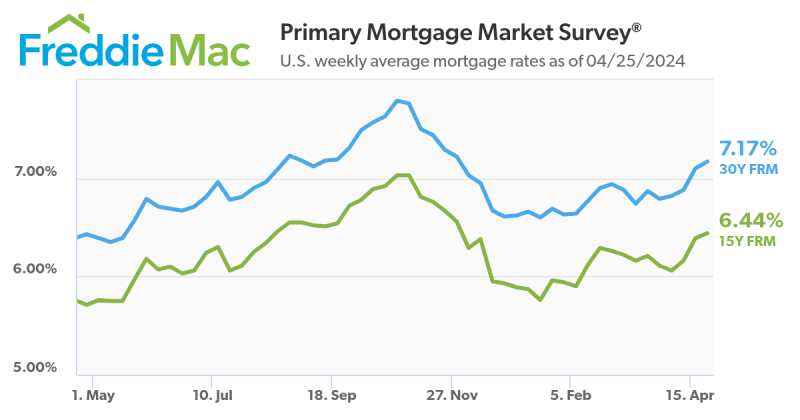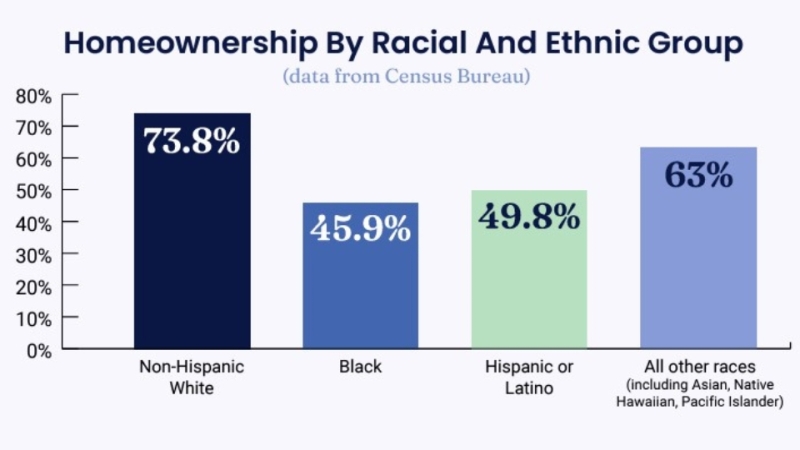Advertisement
NAMB/WEST: A message from the NAMB/WEST Advisory Committee
Forward on reverse: Medicaid rule change to boost demand for reverse mortgagesAtare E. Agbamureverse mortgage, Medicaid, Long-Term Care Reform,
If you are in the business of marketing and originating reverse
mortgages, or if you aspire to be, pay close attention to Medicaid,
Medicaid eligibility and long-term care finance issues. It is about
keeping an eye on the forest and the big issues that will drive
demand for reverse mortgages for decades. It's strategic stuff.
For more than 40 years, Medicaid, a federal/state program
designed to help the poor, has been paying for long-term care for
almost everyone in the United States. Medicaid's long-term care
financing for everyone is about to change because it is eating up
states' budgets. Some experts in Medicaid and state budgets say
that if the pace of Medicaid financing for long-term care goes
unchecked, it will bankrupt the states. Others say government
financing, whether through Medicaid or some other program, is the
solution. With 78 million baby boomers coming down the long-term
care financing pipeline in the next 20 years, federal and state
governments are scared. With a lot of push from the states and
others who care about preserving Medicaid for the needy, Uncle Sam
has changed the rules. The new rules are located in the Deficit
Reduction Act of 2005 (DRA 2005), signed into law by President
George W. Bush on Feb. 8, 2006.
The new rules of Medicaid eligibility say that you are
responsible for your long-term care financing unless you are truly
poor. Personal responsibility for long-term care financing means
alternative financing. Reverse mortgages are a part of alternative
financing tools for long-term care. That's why you and I should add
Medicaid, Medicaid eligibility and long-term care financing
know-how to our reverse mortgage education. It gives us a
competitive edge in our reverse mortgage marketing efforts.
To help us understand the business implications of DRA 2005 for
the emerging reverse mortgage industry and the opportunity it holds
for reverse mortgage lenders and aspiring lenders, I share with you
a conversation that I had with Stephen A. Moses, America's leading
advocate for long-term care reform.
Moses is president of the Seattle-based Center for Long-Term
Care Reform Inc., and is the nation's leading authority on
long-term care financing. The center is a champion of "universal
access to top-quality long-term care by encouraging private
financing as an alternative to Medicaid dependency for most
Americans."
Moses has been involved in health care financing issues at
federal and state levels since 1979. His research and advocacy
influenced the design of Medicaid rules in the Omnibus Budget
Reconciliation Act of 1993 (an earlier federal law which tried to
curb Medicaid shenanigans) as well as DRA 2005. A frequently quoted
and consulted author and speaker, Moses is a one-man crusader for
long-term reform in the United States. He has spoken before the
U.S. Congress and two-thirds of the state legislatures in the
nation. If anyone deserves the moniker "Father of Long-Term Care
Reform in America," it is Stephen Moses. The following is the first
part of my conversation with Stephen Moses on the impact DRA 2005
will have on reverse mortgage business:
Atare E. Agbamu: Steve, why is DRA 2005 important for
the reverse mortgage market?
Stephen A. Moses: It is important because until now,
Medicaid has exempted home equity with no limit. One could own a
home, including all contiguous property, regardless of value. This
could be a 10,000-acre ranch in Montana, Bill Gates' big house on
Lake Washington in Seattle or any mansion anywhere, and you could
qualify for Medicaid. There were other income and asset
restrictions, but those were avoided as well.
What has changed is that there is now a limit of $500,000 in
home equity for people to retain and still qualify for Medicaid.
Now, that's still a very high level. Medicaid is a means-tested
public assistance program; it's welfare. And to be able to retain
the value of half a million dollars and get the government to pay
for your long-term care, which can be very expensive, especially in
a nursing home, is extremely generous.
Just to put it in perspective, in Britain, they only allow
$36,000 in home equity to be exempted to qualify for publicly
financed long-term care. In Germany, they have a 10-year look back
on the transfer of assets, whereas we have only moved the look back
period on asset transfers five years in this country. So, the irony
is that America, with a supposedly free-market capitalist
healthcare system, is far more generous than the so-called
socialized healthcare system in western Europe.
If people can't exempt unlimited home equity, they would be less
likely to hide money in home equity to qualify for Medicaida common
practice until now. And if they do have home equity in excess of
$500,000, they are far more likely to take out a reverse mortgage
to reduce their equity down to the allowable level and use the
proceeds from the reverse mortgage either to supplement their
income so they can buy long-term care insurance or to pay for
community-based services to help them remain in their home and
delay or prevent altogether nursing-home institutionalization and
Medicaid dependency.
So, [DRA 2005] is a very, very positive development. It sends
the message to the public that long-term care is a personal
responsibility, that you can no longer preserve unlimited assets
and get the government to pay for your long-term care, a program
that was really intended as a safety net for the poor and that
therefore, you should plan to be able to pay personally for your
own long-term care. The best way to plan is early planning with
private insurance; but failing that, if one gets to be 62 years of
age and eligible for a reverse mortgage, then that's an excellent
way to ensure that one can pay one's own way.
AA: Why should reverse mortgage lenders support the
effort to educate the American public on the new Medicaid limits on
exempt home equity? How should reverse mortgage lenders go about
this educational process?
SM: First of all, they should educate themselves. Reverse
mortgage lenders are no more knowledgeable about the effect of
Medicaid eligibility in the past on the marketability of their
product than are long-term care insurance industry agents and
officials. Very few people marketing reverse mortgages or long-term
care insurance understand that the primary reason their products
have not sold very well in the past is that Medicaid was readily
available to cover the single biggest risk the elderly faced
financially. People could ignore the risks, avoid the premiums for
private insurance, wait until they got sick, shelter all of their
income and assets including their home equity and get the
government to pay for their long-term care. As long as that was
true, it's little wonder that most people didn't prepare for
long-term care, didn't buy insurance and didnt tap the equity in
their home. Why would you tap the equity in your home if it isn't
at risk for your single biggest cost?
Reverse mortgage lending has taken off in the last few years,
but it hasn't been driven by long-term care expenses. It's been
largely a function of interest rate collapse, and seniors are
dipping into their home equity in order to retain their income
levels and normal standard of living.
Now that Medicaid doesn't protect an unlimited level of home
equity, the public needs [reverse mortgages] much more than was
ever the case. Once they understand it themselves, they should
begin educating the media about this reality. The reporters that
are writing many positive articles lately about how to use reverse
mortgages to retain a decent lifestyle will also be talking about
the importance of using home equity to ensure access to quality
long-term care, particularly in the home.
This new law will mean nothing unless the states implement it,
the feds enforce it, the media publicizes it and reverse mortgage
lenders and insurance agents sell it. It's critical at every stage
that the industry involved in marketing the products that can help
people get access to quality long-term care [is] out aggressively
promoting all of those laws: encouraging states to implement the
rules, the feds to enforce them, the media to publicize them and
their salespeople to sell them. Otherwise, if we don't get the
public awakened to the importance of planning for long-term care,
even using their home equity, we are going to see the age wave
crest and crash on us over the next 10 or 15 years in a way that
will likely wipe out many of the supports that have been there in
the past.
Medicare has a $60 trillion unfunded liability. We've just added
Medicare Part D, which is another $8 trillion that is completely
unfunded for the future. The Social Security program has a $10
trillion unfunded liability. Medicaid, the primary funder of
long-term care in this countrynobody is even calculating the
unfunded liability there because the money comes directly out of
general funds and there is no trust fund. Never mind that they're
phony, but Medicare and Social Security at least have trust funds.
Medicaid doesn't. We've got a whole house of cards here. Government
entitlements that have anesthetized the public to the risk of
long-term care are about to come tumbling down during the next 20
years and smart people should be preparing now for that
eventuality, particularly in the area of long-term care. These are
things that reverse mortgage lenders need to understand. They need
to train their salespeople on the fiduciary responsibility to their
clients to explain these facts of financial life to people. As they
do so, more and more people will see the light and buy their
products. But if [the education] isn't done, consumer behavior
won't change.
AA: So, it is not just enough for reverse mortgage
marketers and originators to know about reverse mortgages. What
should the long term care financing curriculum be for reverse
mortgage lenders?
SM: The simplest and most direct way to do that is to
retain the Center for Long-Term Care Reform, through me, to speak
at their conferences, to write for their publications and to do
op-ed articles for local newspapers. It's basically education.
Without being immodest, there is nobody in the country that
understands it better than I because I've done nothing but this
since the early 1980s when I was a career U.S. government employee
of the Health Care Financing Administration, doing the early
studies that identified the problem of Medicaid planning. And I
have been working ever since to give Medicaid back to the poor and
to get everybody else planning responsibly.
If people understand the importance of planning for long-term
care, a lot more people will take out reverse mortgages, but that
isn't going to happen unless the salespeople understand what has
changed in Medicaid law and unless they convey that reality to
their clients. I am making the observation that while you don't
want to use this new change as a scare tactic, you do have a
fiduciary responsibility to the public to warn them that the rules
have changed and that they will be personally responsible in the
future for their long-term care and that they should be preparing
through insurance and through the use of home equity [reverse
mortgages] to pay their own way for long-term care. The benefits go
beyond avoiding any penalties or consequences that are in the
law.
It is well known that Medicaid has a dismal reputation for
problems of access, quality, reimbursement, discrimination,
institutional bias, loss of independence, welfare stigma and so on.
When people understand the problems associated with ignoring
long-term care until it's too late and then depending on Medicaid,
I think a lot more of them will use their home equity [reverse
mortgages] and buy insurance rather than end up in nursing
homes.
AA: It appears that most of those who will be attracted
to home equity, based on the $500,000 cut-off, will be those in the
upper income or upper asset brackets, right?
SM: No, it shouldn't be at all. What this should be is a
way to convey to the public that home equity is now at risk. They
place the limit this year at $500,000, but as I said, in England,
the limit is $36,000. I think there is every possibility that next
year, Congress can take it to $250,000, and a year after that,
maybe to $50,000. The message the public should receive is that
while the rules remain very generous, the whole trend is in a
downward direction toward preserving Medicaid as a safety net for
the poor and conveying the message to the public that they need to
plan.
If I were of an age where I was concerned about long-term care
now and I had a home, even with $250,000 in equity (which would
still be exempt for purposes of Medicaid), if I needed the income
from that home through a reverse mortgage to supplement my income
so that I could afford private insurance and I was still healthy
and medically qualified, it would be a very sensible reason to take
out a reverse mortgage in anticipation that Medicaid won't be there
in the future for me.
Atare E. Agbamu, CRMS is president of ThinkReverse LLC, a
reverse mortgage training and consulting firm based in the Twin
Cities and is a consultant with Credo Mortgage. Atare is regarded
as an emerging authority on reverse mortgages and is frequently
consulted by financial professionals and families across America.
His reverse mortgage interviews have been Web cast on MortgageMag
Live! He can be reached by phone at (651) 389-1105 or e-mail [email protected].
For more information about Stephen A. Moses and his mission at the
Center for Long-Term Care Reform, visit www.centerltc.com.
About the author





